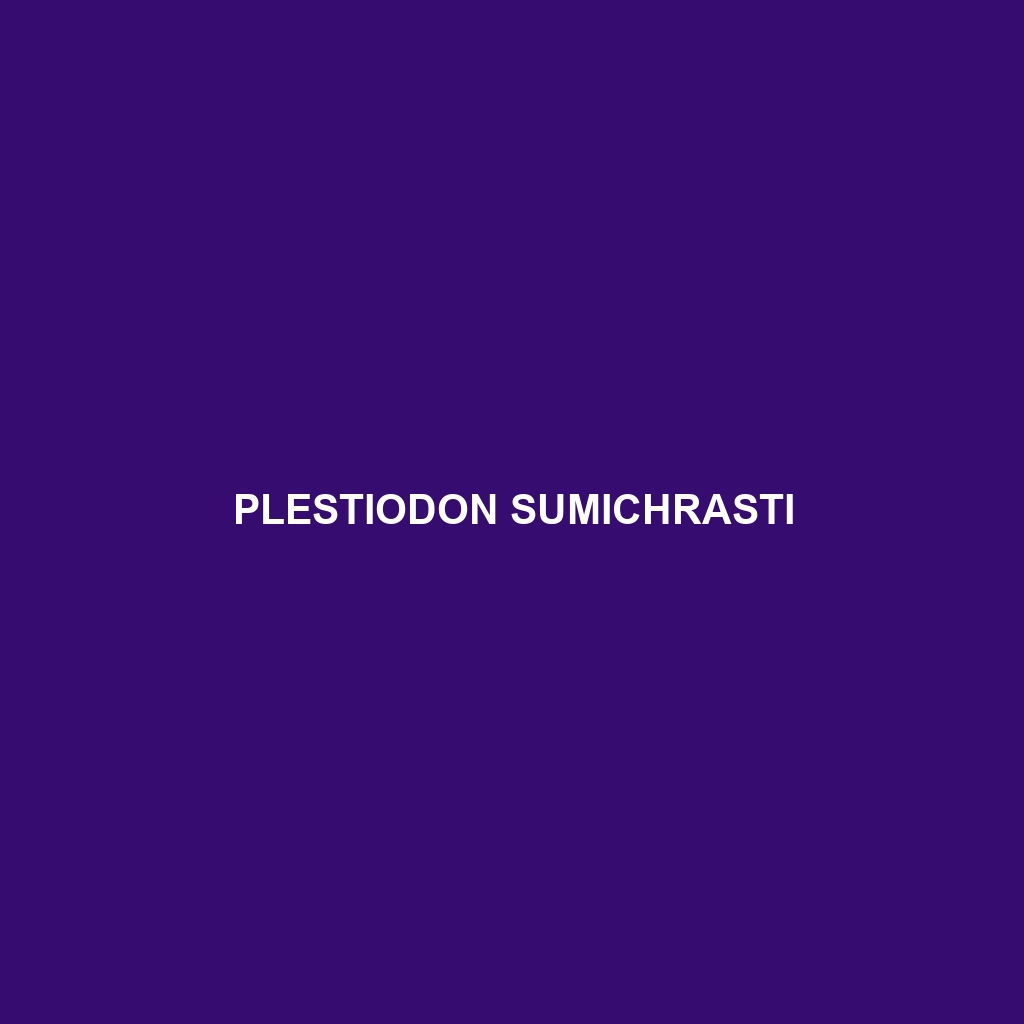Common Name
Plestiodon sumichrasti
Scientific Name
Plestiodon sumichrasti
Habitat
Plestiodon sumichrasti, commonly known as Sumichrast’s skink, is primarily found in the tropical and subtropical regions of Central America, specifically in countries like Guatemala, Honduras, and Nicaragua. This species favors humid environments and is often encountered in rainforests and temperate forests, thriving in both lowland and montane areas. The presence of leaf litter, rotting wood, and dense vegetation primarily characterizes their habitat, providing ample cover and moisture. Additionally, Plestiodon sumichrasti may be spotted in adjacent savanah regions, as they require access to both sun and shade for optimal thermoregulation.
Physical Characteristics
Plestiodon sumichrasti grows to an average length of 15 to 25 cm (approximately 6 to 10 inches), showcasing a slender, elongated body typical of skinks. The coloration varies significantly among individuals but generally includes a base of dark brown or olive with distinct lighter stripes running along the length of the body. The ventral side is usually a lighter shade, enhancing camouflage against predators. One of the unique features of this species is the presence of a relatively long tail that can be detached during predatory encounters, allowing for a quick escape. The smooth, shiny scales of Plestiodon sumichrasti not only contribute to their aesthetic appearance but also aid in easier movement through dense vegetation.
Behavior
The behavior of Plestiodon sumichrasti is characterized by its adaptability to the environment. This skink is primarily diurnal, making it active during daylight hours, although some individuals may exhibit nocturnal behavior in particularly hot climates. They are known to be solitary creatures, preferring to venture out on their own rather than in groups. Mating rituals usually occur during the warmer months, and the males display territorial behaviors, including vocalizations and displays of body posture to attract females. Interestingly, during the dry season, these skinks are known to burrow into the ground or hide under decayed foliage, which helps them conserve moisture and evade extreme temperatures.
Diet
Plestiodon sumichrasti is primarily an insectivore, feeding on a diverse diet of insects such as ants, beetles, and crickets. They are adept hunters, often seen foraging in leaf litter and among fallen branches. Their diet may also include small invertebrates and, occasionally, plant material, making them somewhat of an omnivore in certain circumstances. The skinks employ a sit-and-wait strategy, utilizing their speed and agility to catch unsuspecting prey. This dietary adaptability is crucial for their survival in fluctuating environments, especially during periods of food scarcity.
Reproduction
The reproductive cycle of Plestiodon sumichrasti generally begins in early spring, coinciding with the onset of the rainy season. Males engage in elaborate courtship displays to attract females, which may last for several weeks. After successful mating, females lay eggs typically in well-protected areas within the soil or hidden beneath debris. The average clutch size is between 4 to 10 eggs, with the incubation period ranging from 60 to 80 days, depending on environmental conditions. Parental care is limited; however, females may stay close to the nesting area until the eggs hatch to ensure the safety of the newborns. Once hatched, the juvenile skinks are independent and must fend for themselves right away.
Conservation Status
Currently, the conservation status of Plestiodon sumichrasti is listed as Least Concern according to the International Union for Conservation of Nature (IUCN). However, habitat loss due to deforestation, agricultural expansion, and climate change poses significant challenges to their populations. Conservation efforts are crucial to preserving their natural habitats and mitigating threats posed by human activities. Engaging in habitat restoration initiatives and creating protected areas are essential strategies to ensure the long-term survival of this species.
Interesting Facts
One of the most fascinating aspects of Plestiodon sumichrasti is its ability to regenerate its tail after losing it to predators. This adaptation not only provides a means of escape but also ensures the continuation of the species, as they can survive and reproduce even after such trauma. Additionally, due to its vivid coloration and unique patterns, Plestiodon sumichrasti has caught the interest of reptile enthusiasts and researchers alike, making it a popular subject in herpetological studies.
Role in Ecosystem
Plestiodon sumichrasti plays a pivotal role in its ecosystem as both a predator and prey species. By controlling insect populations, it helps maintain ecological balance. Additionally, as part of the food web, Sumichrast’s skink serves as a food source for various birds and mammals, emphasizing its importance in maintaining biodiversity. Its interactions with other species, including mutualistic relationships with plants, contribute to a healthy and functional ecosystem, making it an essential component of its habitat.
